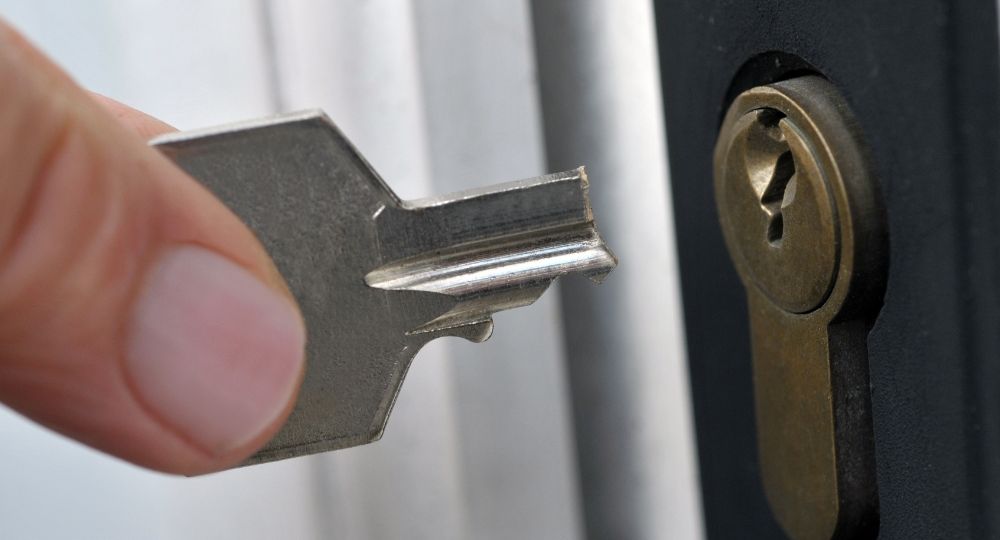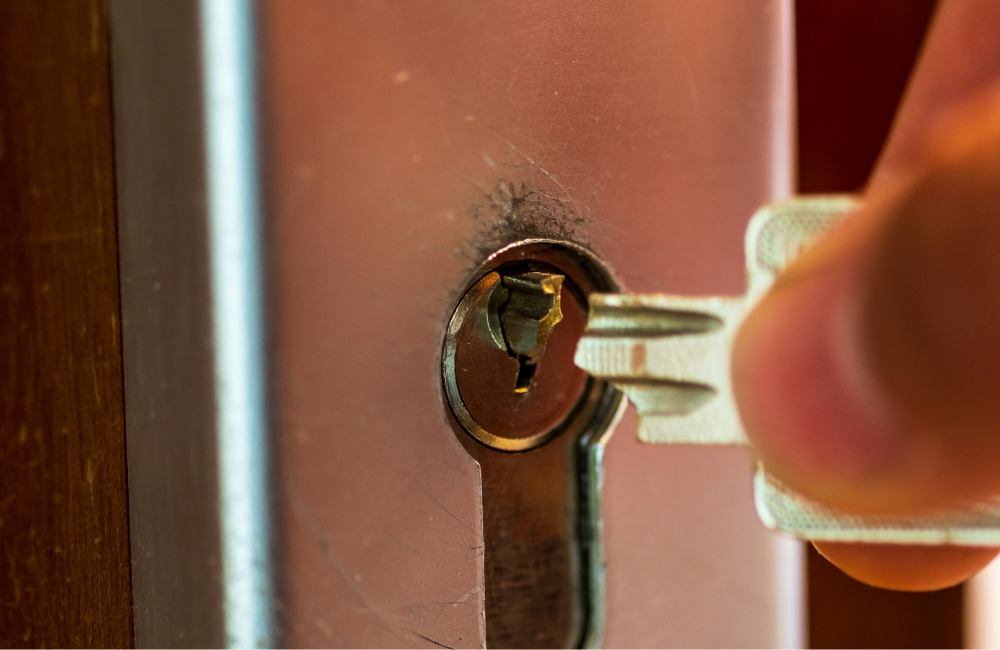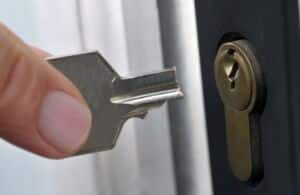
Picture this: you’re in a rush to get inside your home or office, and as you insert your key into the lock, the unthinkable happens – it snaps, leaving a fragment lodged inside. A broken key in a lock can be an exasperating experience, leaving you feeling locked out of your own space. But fear not, as there are solutions to this frustrating problem. In this informative guide, we will walk you through step-by-step methods to safely remove a broken key from a lock, ensuring you regain access to your property with ease.
There are various methods available to you to get out a broken key from within a lock, some more reliable than others. These solutions won’t damage the lock itself and should be easily implementable at home.
Try spraying WD-40 or similar penetrating oil into the lock; this may enable the broken piece of your key to turn back in and out again.
1. Needle Nose Pliers
With the proper tools, removing a snapped key from a lock should be relatively straightforward. However, keep in mind that jamming the broken end into a lock may cause irreparable damage; therefore, when using this kind of tool for the first time it is wise to exercise extreme caution and use these tools cautiously if this is your first experience in such matters.
Needle nose pliers are one of the easiest and fastest ways to extract a broken key from a lock, often working better when combined with some form of lubrication. Depending on the nature of its breakage inside of the lock, depending on its structure you may require thin-tip pliers in order to gain enough gripping surface area in order to lever out the key from its confines.
Another reliable tool for this task is a metal probe, such as a screwdriver or bent bobby pin with its pointy end pointing inward. To use, insert this probe and apply pressure against its side until the broken key comes free from its lock.
Paperclips can also be an effective option, although thinner varieties tend to work best. Simply slip the clip under and around the broken portion of the key until it clicks into place. Bend the paperclip so it encases the first cut of your key and leverages it into the lock, eventually pulling out all broken keys with this method. Before trying this method, always apply some lubricant to the lock in order to speed up and enhance its performance. If this doesn’t do the trick, don’t be intimidated from calling in a professional locksmith for assistance. Also keep in mind that if your keys show any sign of wear and tear, taking them in for buffing will ensure they won’t snap easily in future issues.
2. Tweezers
Once a key has been broken in a lock, retrieving it may prove challenging. Relying solely on fingers may only jimmy it further into place; to prevent further frustration take several deep breaths before using tweezers to extract the broken pieces – these work best when only small sections have broken off of their key and might be easier if they fit better sized for this job.
Like pliers, this method works best if the broken key has been lubricated before attempting to use tweezers on it. Otherwise, they could push the broken piece deeper into the lock – making it even harder to grip than before; but by wiggling around with them you might be able to free it from its bindings and save your precious time and effort!
If you don’t own or are uncomfortably using tweezers, an alternative method could be using two bobby pins to grip both ends of a broken piece and then leverage it out – this works similarly to using paperclips but provides greater gripping power.

Hacksaw or jigsaw blades offer another effective option, as many homeowners already possess one in their garage or tool box, though you can easily purchase inexpensive versions at home improvement stores. They work incredibly well; sometimes even helping free the broken part before needing to cut it completely out with the other blade.
If your broken key won’t turn, even after trying all the above solutions, it might be time to contact a locksmith. Before doing so, spray some Teflon or silicone-based lubricant (not WD-40) into the lock to reduce resistance from turning, which will also prevent any possible damage that might require new key cutting services in future. Otherwise, keep trying! It may take multiple attempts, but with persistence you are likely to eventually extract your key from its lock.
3. Paperclip
Paperclips are an invaluable little tool that you can use to help remove a broken key. Use it as an “rake” pick or simply lever the key back and forth until the key pops out of its slot. Ultimately, thinner paperclips work best as you will be exerting more pressure upon it; this method may require multiple attempts before being successful.
If the break is in an inaccessible area that makes using pliers impossible, consider switching to a pair of tweezers instead. Though less rigid than their metal counterparts, tweezers may still help break free any binding that keeps it locked within its lock. You could also attempt depressing pins with them – however this may prove challenging as you must pull up and down without pushing more pieces of your key into its mechanism!
As with any makeshift tool, the key to successful use is keeping calm. Panicking may only worsen matters; to find success you should remain calm and try various approaches until the key has been successfully extracted from its lock.
When using a paperclip as a pick, first straighten out half of it and bend up one end slightly to form a hook-like structure at its straightened end. Depending on the type of lock that needs picking, experiment with how high you make this hook before inserting it in a door lock – this makes your pick look like more of a snake and may make raking out broken keys easier!
Make a “rake” by bending down one side of the paperclip into a U shape – this will produce less angled “hook” shapes and is easier for use in more delicate areas of the lock.
4. Bobby Pins
As an alternative to paperclips, bobby pins may also help when your key becomes locked inside a lock. Bend one so it is straight, insert it into each side of the lock (left and right) next to where your broken key was embedded, apply light pressure with your thumb, then slowly pull back out with force applied from each side until all pieces have been extracted from its slot. However, this method only works if only very small parts remain of your key have broken off; otherwise seek professional repair as soon as possible from a locksmith professional as soon as possible!
As it’s vitally important that you remain calm when trying to remove a broken key from a lock, keeping a cool head is vitally important when extracting one from one of these methods. Panicking could only worsen matters; too rough with tools could break something else inside the lock that makes removal even harder; be patient as each method takes its course before giving up! Finally, should any pieces break off inside, be sure to save them so they can be given to a locksmith or local hardware store so they can cut a new key! Good luck and enjoy!
CALL A LOCAL LOCKSMITH
If you find yourself in a bind with a broken key and need professional assistance, don’t hesitate to contact us for expert locksmith service in the Greater Toronto Area. Visit our homepage or call us now (647) 578-9881 for a free estimate and prompt locksmith assistance. Our skilled locksmiths are always ready to lend a helping hand and ensure your security is never compromised. Trust the leading locksmith experts in Toronto to handle your lock and key emergencies efficiently and professionally.
